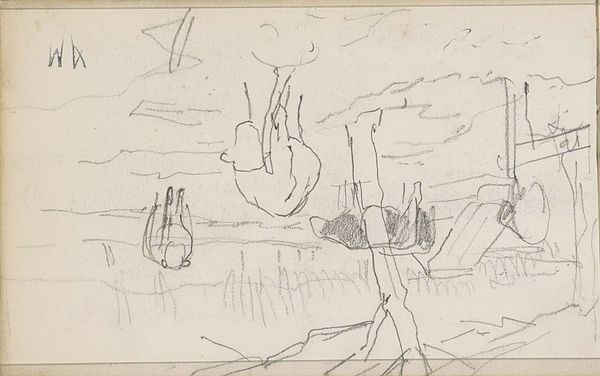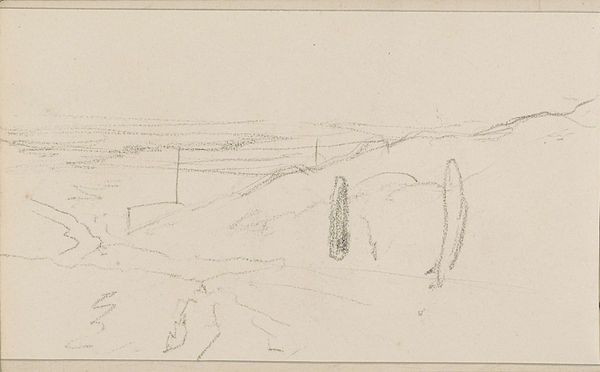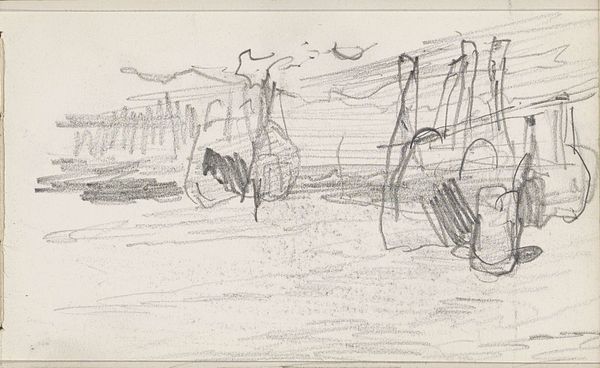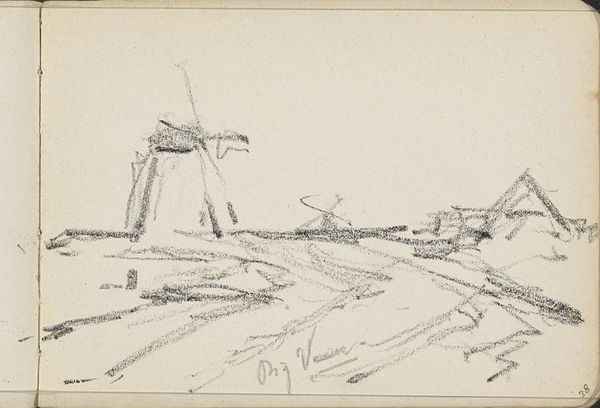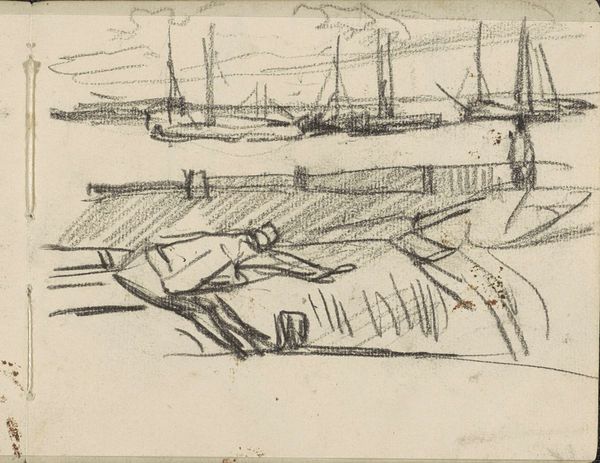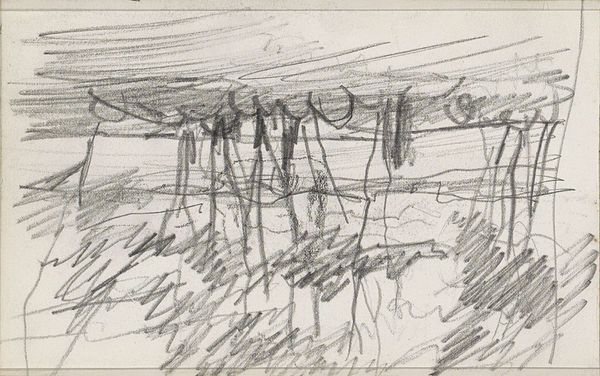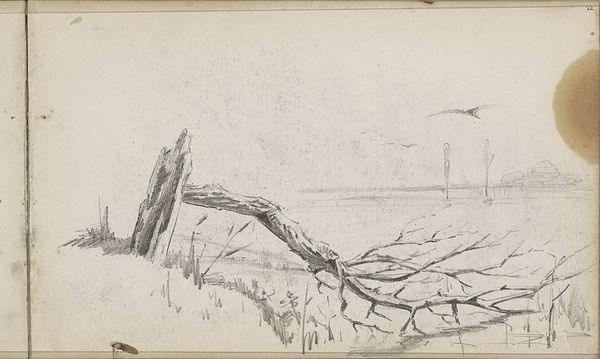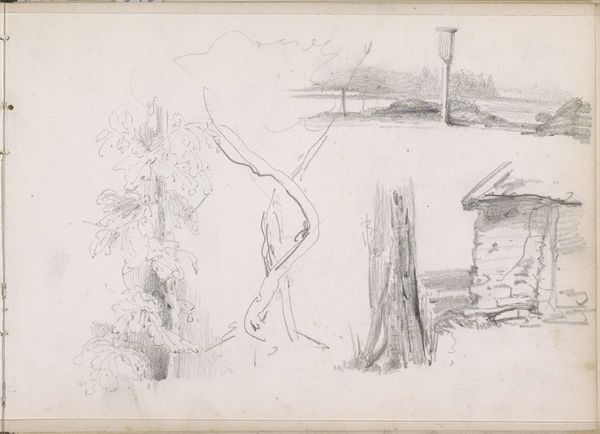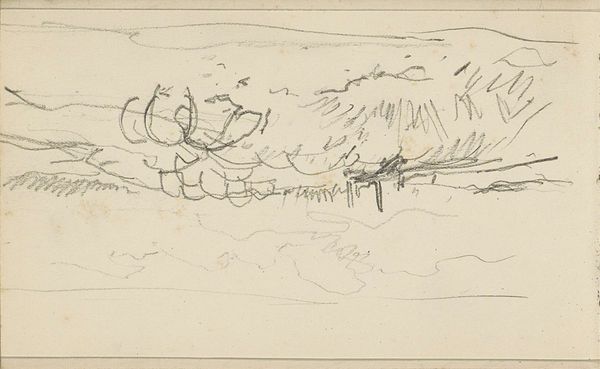
drawing, pencil
#
drawing
#
dutch-golden-age
#
impressionism
#
landscape
#
figuration
#
pencil
#
line
#
realism
Copyright: Rijks Museum: Open Domain
Editor: This drawing, "Weiland met koeien bij een sloot" or "Pasture with cows by a ditch," created between 1848 and 1888 by Anton Mauve, is a study in pencil. There’s a vulnerability in the sketchiness. What sociopolitical themes do you see emerging from this tranquil, natural scene? Curator: Tranquility can be deceiving. I see the lingering effects of industrialization. The restrained palette hints at the shifting economic landscapes, a pre-industrialized vision on the cusp of change. Mauve lived in a time of mass migration from rural communities to the cities, right? Editor: Yes, there were many changes during Mauve’s lifetime. The rural population became significantly smaller, but what does that tell us about this particular image? Curator: Look at the cows. They seem almost huddled together, marginalized within their own habitat. Mauve isn’t just painting a landscape. He subtly comments on the displacement felt by both humans and animals as agrarian societies transform into modern economies. How does the line work contribute to this interpretation, in your opinion? Editor: The sketchiness feels almost rushed, as though he’s trying to capture a fleeting moment before it disappears, and there's this subtle interplay between the detailed cows and the vaguer background. Curator: Exactly. He captures this turning point of his society with that very conscious vagueness. Mauve implicates viewers of later eras. How do we want to value, or exploit, this landscape now? What kind of responsibility to the non-human animal do we have? Editor: I didn’t consider how a drawing of cows could ask such weighty questions! Thanks, it helps reveal some really nuanced layers to what seems a gentle image. Curator: Art opens up the space for this sort of critical questioning; I learned so much from hearing your perspective.
Comments
No comments
Be the first to comment and join the conversation on the ultimate creative platform.
